Last quarter, a subscription business lost 12% of its customer base before anyone on the leadership team understood why.
The relevant data was there all along, but buried in support tickets, survey responses, and chat logs. And by the time insights surfaced, frustrated customers had already canceled.
The real issue here is that they weren't tracking and aligning themselves to what customers were actually saying. In essence, they were reacting to metrics that told them what happened, not why it happened.
This scenario plays out constantly across subscription businesses. You have feedback flowing in from every channel, but turning that noise into clarity and clarity into action fast enough to prevent churn remains the challenge.
That's where Voice of Customer (VoC) research becomes essential.
7 Methods of Voice of Customer (VoC) Research
The most effective VoC programs employ a combination of approaches to strike a balance between structured data and rich, qualitative context. Here are proven methods for conducting VoC research:
1. Surveys (CSAT, NPS, and CES)
Surveys are one of the most effective ways for you to capture structured, quantifiable customer insights. With tools such as Customer Satisfaction (CSAT), Net Promoter Score (NPS), and Customer Effort Score (CES), you can measure various aspects of the customer experience.
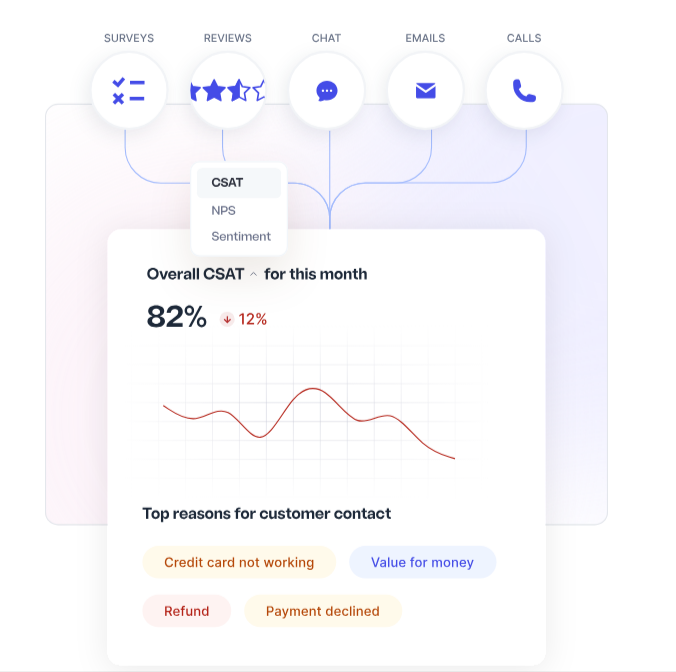
CSAT shows you how satisfied customers are, NPS reveals how likely they are to recommend your brand, and CES tells you how easy it is for them to complete a task.
Since surveys are standardized, you can repeat them to track trends, monitor changes, and evaluate new initiatives.
They’re scalable and reliable, but they don’t always provide depth. That’s why you’ll get the best results when you combine surveys with qualitative methods.
2. Customer Interviews
If you want deeper insights than surveys can offer, interviews help you dig into the “why” behind customer behavior. By asking open-ended questions, you uncover motivations, frustrations, and expectations that structured feedback usually misses.
You can conduct interviews face-to-face, over the phone, or virtually, depending on your resources and your customers’ preferences. While this method takes more time and effort, it often surfaces hidden pain points and unmet needs.
Interviews are especially useful when you’re shaping product roadmaps, refining services, or developing messaging strategies. They’re invaluable in early discovery or before launching new offerings when detailed insights matter most.
3. Focus Groups
Focus groups enable you to gather feedback from a group of customers through a guided discussion. The group setting encourages people to bounce ideas off each other, revealing shared challenges, unique viewpoints, and recurring themes.
You’ll find them especially useful for testing new concepts, validating assumptions, or getting feedback on your brand messaging. Beyond what participants say, you can observe tone, body language, and emotional reactions.
A skilled moderator is crucial in ensuring that everyone’s voice is heard and in preventing groupthink. When run effectively, focus groups provide community-driven insights that aid in product innovation, marketing, and positioning.
4. Support Tickets and Complaints Analysis
Your support tickets and complaints often reveal the rawest, most direct feedback from customers. Unlike surveys, these are unsolicited; you’re hearing from people motivated enough to speak up.

By analyzing these interactions, you can identify recurring problems, product flaws, or service gaps that may be present. Trends in ticket volume or escalation rates may also highlight operational inefficiencies.
Once categorized and quantified, this feedback reveals the top drivers of dissatisfaction, providing a clear roadmap for improvements. More importantly, acting on complaints builds trust and reduces churn, proving to customers that you’re responsive.
5. Social Media Listening
Your customers are already talking about you on platforms like LinkedIn, Twitter, Instagram, and Facebook. With social media listening, you track mentions, hashtags, and conversations to capture real-time sentiment.
This approach helps you identify issues before they escalate and allows you to compare how customers discuss you versus your competitors. Modern NLP-powered tools even help detect themes and measure sentiment automatically.
Unlike surveys, social media feedback is spontaneous and authentic, providing a candid glimpse into customer opinions. By combining this with structured data, you can respond more quickly, enhance engagement, and remain relevant in a rapidly changing market.
6. Online Reviews and Feedback Forms
Reviews and feedback forms provide you with unfiltered insights directly from customers. Whether it’s on platforms like G2, Trustpilot, or Google Reviews or through in-app and website forms, you get a clear picture of what customers love and what frustrates them.
Reviews influence purchasing decisions, while feedback forms capture real-time input at critical points in the customer journey. When you analyze them in bulk, you uncover recurring themes, benchmark performance, and identify areas for improvement.
Positive reviews also strengthen your reputation, and when you respond transparently to negative ones, you build credibility and trust.
7. Website and App Analytics
With analytics, you can see how customers really behave on your digital platforms. Metrics like bounce rates, click paths, and time on page reveal what’s working and where customers get stuck.
For example, high cart abandonment may indicate checkout issues, while heatmaps and session recordings pinpoint areas of friction. By combining this behavioral data with direct feedback, you bridge the gap between what customers say and what they do.
Because analytics are continuous and scalable, they help you refine navigation, optimize flows, and improve overall digital experiences—ensuring your decisions are data-driven.
5 Best Practices For Voice Of The Customer (VOC) Research
To maximize the benefits of your VoC program, you need a straightforward process that converts customer input into tangible improvements. Here are five best practices:
1. Ask Clear, Focused Survey Questions
Your VoC research begins with asking the right questions. Keep surveys short and specific. Tie each question to a clear goal. Do you want to measure satisfaction? Find pain points? Check loyalty levels?
Avoid vague pointers. Don't ask "Do you like our product?" Instead, ask "How well does our product meet your needs?"
Use rating scales for trends. Try out open-ended questions for context. This gives you both numbers and stories.
2. Collect Feedback from Multiple Channels
Your customers interact with you in various ways, including email, chat, phone, social media, and within your product. If you only gather feedback from one channel, you’ll miss important insights.
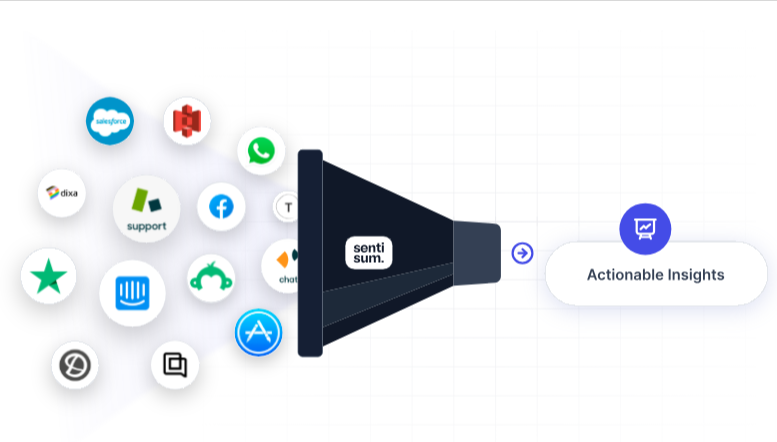
If you only check one channel, you miss important insights. Combine surveys with support tickets. Add app reviews. Include social media comments. This shows you the full customer journey. As a result, you'll spot patterns across all touchpoints.
3. Make Sure Your Sample is Representative
Don’t rely on a small or skewed group of customers. Aim for a sample size that’s large and diverse enough to reflect your actual customer base.
If one loud group dominates, your priorities are distorted. Break down responses by customer type (new vs. long-term, small vs. enterprise) to ensure your insights accurately represent everyone.
4. Analyze Both Quantitative and Qualitative
Metrics like NPS, CSAT, and CES show you what is happening. But open-text feedback explains why. Using both gives you the whole story.
Leverage tools like sentiment analysis or text analytics to turn written feedback into clear insights. That way, you don’t just track performance, you also understand the reasons behind it.
5. Act on Feedback and Close the Loop
Asking for feedback without taking action damages trust. Customers want to see that their voices make a difference.
Share insights with your product, support, and marketing teams so they can prioritize changes. Then, let customers know how their input led to improvements, whether it’s a new feature, better support, or a policy update.
This builds trust and keeps them engaged in future surveys.
Key Challenges In Voice Of The Customer (VOC) Research
When you run a VoC program, you’ll likely face a few common challenges that can slow down or limit the impact of your efforts.
1. Manual Analysis of Unstructured Feedback
If you're still manually reading through survey comments, support tickets, and social media posts, you already know how slow that process becomes. The reality is that you can only review a small fraction of the feedback coming in, which means critical churn signals get missed.
Manual analysis also introduces bias because different team members interpret feedback differently. This makes it harder to spot churn risks early, creating a bottleneck that slows down your ability to prevent customer loss. When you can't process feedback at scale, you can't identify at-risk customers fast enough to take action.
2. Slow and Fragmented Insights
Traditional surveys and post-interaction feedback create a dangerous timing problem for retention. You often get insights weeks or even months after the customer experience happened. By the time you see the data and respond, frustrated customers may have already churned.
The situation gets worse when feedback sits in silos across different teams. Support has their data, product has theirs, and marketing keeps separate records. Without a unified view of what customers are saying, you can't detect churn patterns across touchpoints.
This fragmentation prevents you from acting on early warning signs before customers leave.
3. Lack of Real-Time Actionability
Customers expect you to respond quickly when something goes wrong. But traditional VoC programs can't deliver real-time retention insights, which makes it difficult to intervene when churn risks emerge (whether that's a confusing checkout flow, a product bug, or a frustrating support interaction).
Without real-time alerts and automated workflows connecting feedback to action, you miss critical opportunities to prevent churn. You can't catch at-risk customers before they cancel.
You can't turn negative experiences into retention wins fast enough. This ultimately limits how much your VoC program can actually reduce churn and improve customer loyalty.
Why SentiSum Is the Best Tool for VoC Research
SentiSum stands out as one of the most effective Voice of the Customer (VoC) research tools because it transforms messy, unstructured feedback into clear, actionable insights fast.
Traditional methods rely on manual analysis, which is slow and often misses critical patterns.
SentiSum eliminates this bottleneck with Kyo, its AI agent designed to analyze customer feedback in real-time across multiple channels, including support tickets, surveys, chats, and reviews.

What makes Kyo powerful is its ability to surface the why behind customer sentiment, not just the what. Instead of waiting weeks for insights, teams can instantly identify recurring pain points, whether it’s product bugs, confusing onboarding, or poor response times and prioritize fixes that have the biggest impact on customer experience.
Kyo doesn’t just stop at analysis; it makes insights immediately actionable. Automated tagging, alerts, and integrations with existing tools (such as Zendesk, Salesforce, or Slack) ensure that the right teams receive the correct feedback at the right time.
This turns VoC from a static reporting exercise into a continuous improvement loop.
SentiSum empowers companies to close the feedback loop quickly, reduce churn, and build stronger customer loyalty.
Case Study: How Scandinavian Biolabs Uses SentiSum to Reprioritize Product Roadmaps
Scandinavian Biolabs faced a challenge: thousands of support tickets each month and no efficient way to identify top customer issues. With customer feedback central to decision-making, they turned to SentiSum for clarity.
By integrating with Gorgias, SentiSum applied AI-driven tagging to uncover recurring pain points, surfacing 55 custom insights from historical data. This allowed the team to objectively prioritize issues and bring customer voices directly into product and strategy discussions. As CEO, Anders Reckendorff noted, “Insights from SentiSum became the basis for our strategic and product meetings.”
The impact was immediate. Resolution times were halved, major churn drivers were reduced by 50%, and self-serve documentation was improved, resulting in a 19% decrease in generic inquiries.
Product roadmaps were reshaped to address friction points earlier, while marketing gained valuable input for campaigns. Ultimately, SentiSum enabled Scandinavian Biolabs to align their strategy with customer needs and enhance the customer experience across the business.
Transform VoC Research Into Measurable Retention Results With SentiSum
Your customers’ feedback is one of your most valuable assets; it shows you what they care about most, where they face challenges, and how you can improve to earn stronger loyalty. But feedback on its own doesn’t drive change; you need clear, timely insights you can act on.
That’s where SentiSum helps. With advanced AI analyzing feedback from tickets, reviews, surveys, and chats, SentiSum uncovers root causes instantly and delivers insights right into your workflows.
This lets you prioritize fixes, improve experiences, and achieve results like faster resolutions, lower churn, and smarter, customer-driven product roadmaps.
Ready to turn feedback into a competitive edge? Book a demo with SentiSum today and see AI-powered VoC in action.
Heading 1
Heading 2
Heading 3
Heading 4
Heading 5
Heading 6
Lorem ipsum dolor sit amet, consectetur adipiscing elit, sed do eiusmod tempor incididunt ut labore et dolore magna aliqua. Ut enim ad minim veniam, quis nostrud exercitation ullamco laboris nisi ut aliquip ex ea commodo consequat. Duis aute irure dolor in reprehenderit in voluptate velit esse cillum dolore eu fugiat nulla pariatur.
Block quote
Ordered list
- Item 1
- Item 2
- Item 3
Unordered list
- Item A
- Item B
- Item C
Bold text
Emphasis
Superscript
Subscript

.webp)
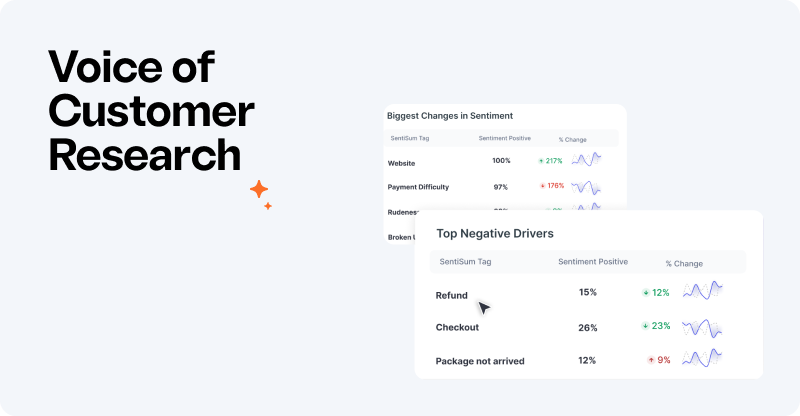





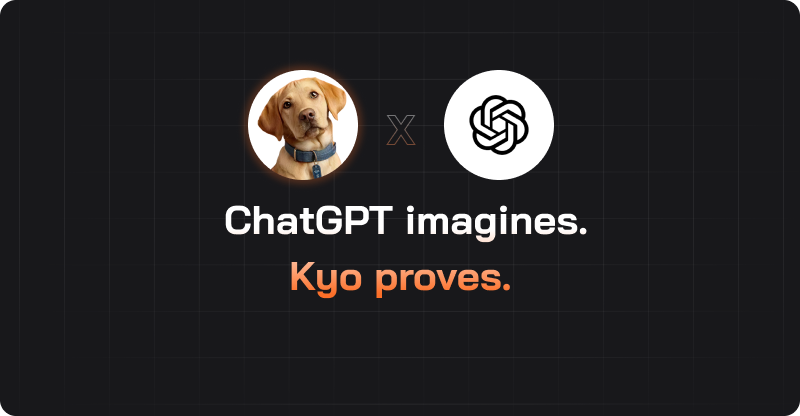
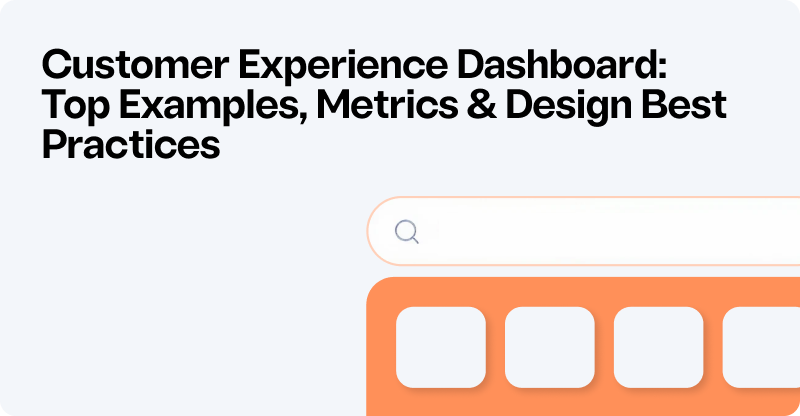

.webp)

.svg)











